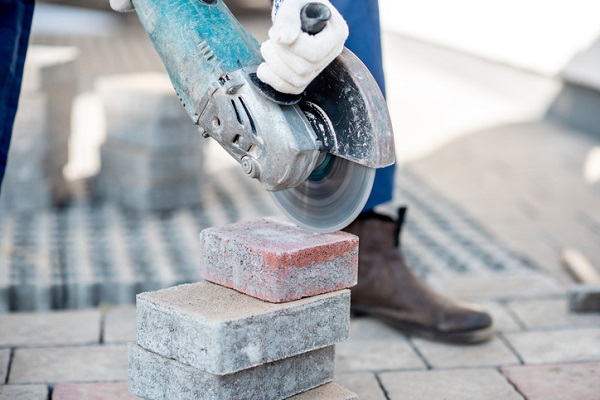Crystal clear: licensing scheme for silica saves lives

As we learn more about crystalline silica and its ill effects on tradespeople across the country, moves are being made to increase safety. Sean Carroll writes about the upcoming new licensing scheme.
When stone is cut, whether it be for a granite kitchen benchtop, for a tunnelling job or earth moving, silica dust is created. If not dealt with appropriately, the dust becomes airborne and can be breathed in by nearby tradies, potentially causing silicosis.
Silicosis is a dangerous disease that is caused by internal scarring of the lungs and can lead to several fatal issues.
Because of where it comes from, it’s critical that building and construction workers know about the risks associated with it and the steps to prevent the release of respirable crystalline silica or silica dust.
Workers in engineered stone benchtop manufacturing, finishing and installation are at particular risk. This comparatively new material contains up to 95% crystalline silica, distinct from natural stone’s crystalline silica composition of 5% to 50%.
Because of this, the Victorian government has announced strict requirements for those working on engineered stone and employers.
In 2021, WorkSafe Australia accepted 73 claims from workers who had developed a silica-related disease as a result of workplace exposure and, sadly, five people lost their lives.
Under new rules, Victorian businesses working with silica must identify and document high-risk crystalline silica work and the risk control measures they have in place.
Any employer or self-employed person who works with engineered stone in Victoria must obtain a licence before November 2022. From that time, manufacturers and suppliers can only supply engineered stone to license holders. Failure to have the required license may even be used in criminal proceedings against that employer.
The new scheme is very strict but when working with such dangerous substances, it’s essential to keep workers safe.
“Silicosis has already cost too many workers their health and, in some cases their lives – that’s why we’ve banned dry cutting and are rolling out even greater protections for workers,” Victorian Minister for Workplace Safety, Ingrid Stitt says.
“Licensing the use of engineered stone will ensure people working with these products have the necessary safety protections so that tradies aren’t exposed to deadly silica dust.”
WorkSafe Vic chief executive, Colin Radford, says silicosis can strike down even young workers with its incurable scarring of the lungs: “In 2021, WorkSafe Victoria accepted 59 claims from workers who have developed some silica-related diseases as a result of exposure.”
Victoria is taking a brave first step in halting all silicosis-related deaths but these requirements need to be put in place at a federal level to truly have an impact.
The ACT government has recently banned all dry cutting on certain substances but it’s more of a short-term solution.
“Unions have fought hard to combat silica exposure. It’s encouraging that some builders and sub-contractors have worked with us but we need the whole industry to act together to reduce the risk posed by this deadly substance,” CFMEU ACT construction secretary Zachary Smith says.
“The measures announced by the ACT Government are an important step but will only work if the industry, as a whole, lifts its game.”
Zachary adds that while some employers are doing the right thing, too many are failing to take silica exposure seriously and are cavalier about exposing workers to deadly harm.
“In NSW, recent safety data revealed almost one-in-four engineered stone workers who had been in the industry since 2018 were suffering from silicosis or another dust-related disease, prompting calls for a complete ban on high-silica products in that state,” he explains.
As it currently stands, Safe Work Australia’s (SWA) guidelines for removing silica dust say that companies can eliminate silica dust at the source by eliminating the processes that generate dust. For example:
- Adopting production processes that generate less dust – for example, any wet method is likely to generate less dust than a dry one;
- Treating the dust at the point of generation, as this is more effective than capturing airborne dust; and
- Treating the dust on its transmission path using dust suppression techniques – for example, water sprays, chemical additives, local exhaust ventilation (LEV) and vacuum. If it is reasonably practicable, eliminate the silica-containing products from your workplace.
The workplace exposure standard for respirable crystalline silica that must not be exceeded is 0.05 mg/m3 (eight-hour time-weighted average) according to SWA. Air monitoring must be conducted if there is any uncertainty that the exposure standard is being exceeded or to find out if there is a risk to a worker’s health.
The industry needs stronger, more unified regulations in place. While some states and territories might take individual steps forward in combatting the silica issue, it’s irrelevant if it leaves others in the dust.
